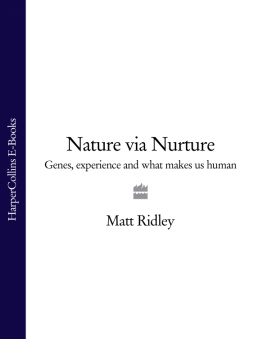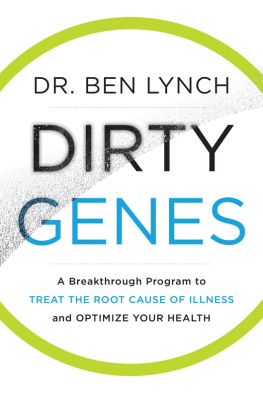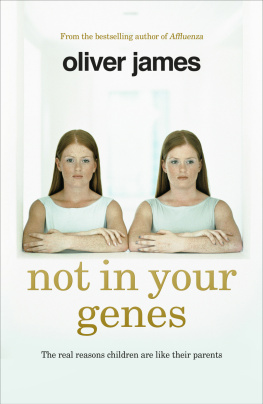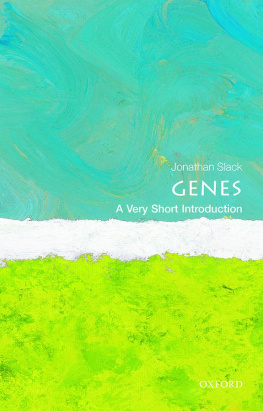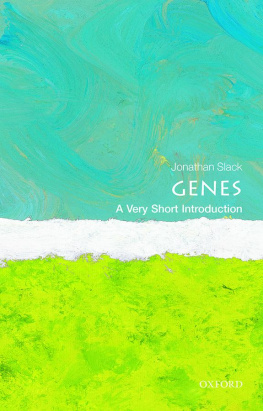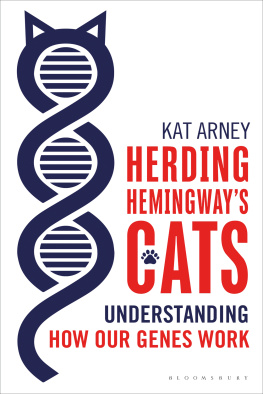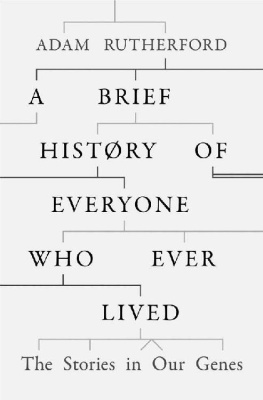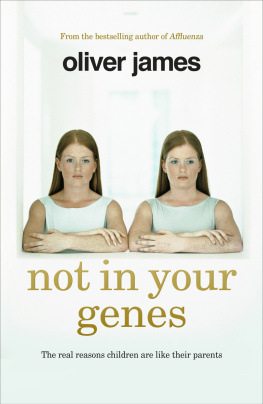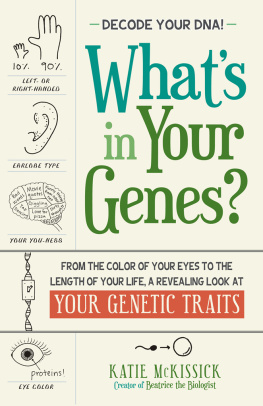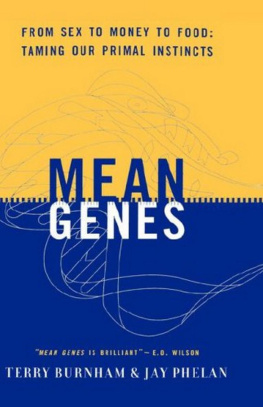The Compatibility Gene
DANIEL M. DAVIS
The Compatibility Gene
How Our Bodies Fight Disease,
Attract Others, and Define Our Selves


Oxford University Press is a department of the University of Oxford.
It furthers the Universitys objective of excellence in research, scholarship, and education by publishing worldwide.
Oxford New York
Auckland Cape Town Dar es Salaam Hong Kong Karachi
Kuala Lumpur Madrid Melbourne Mexico City Nairobi
New Delhi Shanghai Taipei Toronto
With offices in
Argentina Austria Brazil Chile Czech Republic France Greece
Guatemala Hungary Italy Japan Poland Portugal Singapore
South Korea Switzerland Thailand Turkey Ukraine Vietnam
Oxford is a registered trade mark of Oxford University Press in the UK and certain other countries.
Published in the United States of America by
Oxford University Press
198 Madison Avenue, New York, NY 10016
Daniel M. Davis 2014
The illustration on p. 77 is adapted by permission of Macmillan Publishers Ltd from
Nature, 329, pp. 50612, copyright 1987
All rights reserved. No part of this publication may be reproduced, stored in a retrieval system, or transmitted, in any form or by any means, without the prior permission in writing of Oxford University Press, or as expressly permitted by law, by license, or under terms agreed with the appropriate reproduction rights organization. Inquiries concerning reproduction outside the scope of the above should be sent to the Rights Department, Oxford University Press, at the address above.
You must not circulate this work in any other form and you must impose this same condition on any acquirer.
Library of Congress Cataloging-in-Publication Data
Davis, Daniel M. (Daniel Michael), 1970
The compatibility gene : how our bodies fight disease, attract others, and define our selves / Daniel M. Davis.
pages cm
Includes bibliographical references and index.
ISBN 978-0-19-931641-0 (hardback)
1. Medical genetics. 2. InfectionImmunological aspects. 3. Immunogenetics. 4. Human molecular genetics. I. Title.
RB155.D36 2014
616.042dc23 2013020914
1 3 5 7 9 8 6 4 2
Printed in the United States of America on acid-free paper
For Katie, Briony and Jack
Contents
PART ONE
The Scientific Revolution in Compatibility
PART TWO
The Frontier of Compatibility Gene Research
PART THREE
The Overarching System
I am especially grateful to those I had the privilege of interviewing for this book: Brigitte Askonas, Gary Beauchamp, Pamela Bjorkman, Walter Bodmer, Leslie Brent, Derrick Brewerton, Mary Carrington, Margaret Dallman, Mark Davis, Elizabeth Dexter, Peter Doherty, Ron Germain, Klas Krre, Jim Kaufman, Rolf Kiessling, Steve Marsh, Polly Matzinger, Hugh McDevitt, Andrew McMichael, Charles Medawar, Avrion Mitchison, Ashley Moffett, Jon van Rood, Eric Schadt, Carla Shatz, Elizabeth Simpson, Andrew Strominger, Jack Strominger, Alain Townsend, Bruce Walker, Claus Wedekind, Wayne Yokoyama and Rolf Zinkernagel. Several discussions with Peter Parham were particularly influential.
I also thank Steve Marsh and the team at Anthony Nolan, who performed the HLA typing for my wife and me. Others who helped me to address specific issues while writing this book include Danny Altmann, Jorge Carneiro, Andrew Giddy, Salim Khakoo, Ofer Mandelboim, Jim McCluskey, Maryam Mehrabi, Sophie Pageon, Marco Purbhoo and Anton van der Merwe. Im also indebted to those who commented on early versions of some or all of the text: Brigitte Askonas, Mary Carrington, George Cohen, Richard Dawkins, Peter Doherty, Steve Marsh, Peter Parham, Elizabeth Simpson, Jack Strominger and Claus Wedekind. Of course, any remaining errors are my responsibility alone.
Many others supported me while writing this book, including members of my research team, the senior faculty at Imperial College London, who allowed me to take a years sabbatical leave, and faculty at the University of Manchester, where I completed the project. Armand Leroi, author of Mutants, was exceptionally helpful throughout, pushing me to develop my ideas more carefully at the outset and showing me where to rework the text at the end. Caroline Hardman, my agent initially at the Christopher Little Literary Agency and now at Hardman and Swainson, has been fantastic throughout and gave useful feedback at every stage. Sarah Levitt at the Zo Pagnamenta Agency also had an important input in improving my text. Alice Brown, Lucy Hairsine, Clive Gerner and Joel Rickett all helped my proposal get noticed early on.
Im indebted to Stefan McGrath and William Goodlad at Penguin Press, who supported this project at the outset. My editor at Penguin Press, Thomas Penn, author of The Winter King, had a wonderful influence on my writing and the structure of this book. My editor at OUP, Joan Bossert, also made many very helpful, formative suggestions. Im also grateful to David Watson, who carefully copy-edited my text. Finally, my wife, Katie, edited the book first and suggested many important changes; I thank her, and our kids, Briony and Jack, for encouraging me throughout and sharing the journey.
Immunology is a vast and complex science. In this book, I have sought to present some of the big ideas alongside the stories of individuals who have played a central role in gaining this knowledge. But I am acutely aware that there are a huge number of people who contributed to our understanding of the immune system and the relevant genetics, who are not explicitly named in this book or have been mentioned only superficially. I have made many ruthless omissions in my attempt to keep the narrative and the scientific ideas as clear as possible for the general reader. Quite simply, this is an extraordinarily rich story in which there have been many players, and its impossible to catalogue everyones contribution. Immunologists will notice that some details are covered more thoroughly than others; I have discussed class I genes far more than class II genes, for example. Rather than present a complete textbook-level description of the immune system, I wanted to focus on broad issues, such as the variation in human immune-system genes which can, for example, be illustrated equally well with class I or class II genes. I can only apologize to anyone whose discoveries I have not included or have mentioned all too briefly; any one book can only tell part of a story.
Theres a man, happy and minding his own business, who sees an open gate in the corner of the room where he is. He approaches the gate, wondering where it leads. But as he does so, he sees that its being guarded. The guard who looks powerful from a distance but appears unkempt close up warns the man that nobody has ever been through this gate. He also mentions that beyond this gate theres another, with a guard whos even more powerful. So the man just backs away and spends his days which turn into decades in the room, occasionally wondering about the gate and where it leads to. Eventually, when the man is weak and knows his own death must be near, he realizes what he should ask the guard. He shuffles back and asks, In all the time Ive been in this room, why has nobody ever been through the gate? Because, the guard replies, this gate was only meant for you... but its too late now.
Written in 1914, Franz Kafkas parable Before the Law has inspired me often. The version that I carry in my head now is slightly different from what Kafka actually wrote, or the way Anthony Hopkins tells it in the 1993 movie of
Next page

